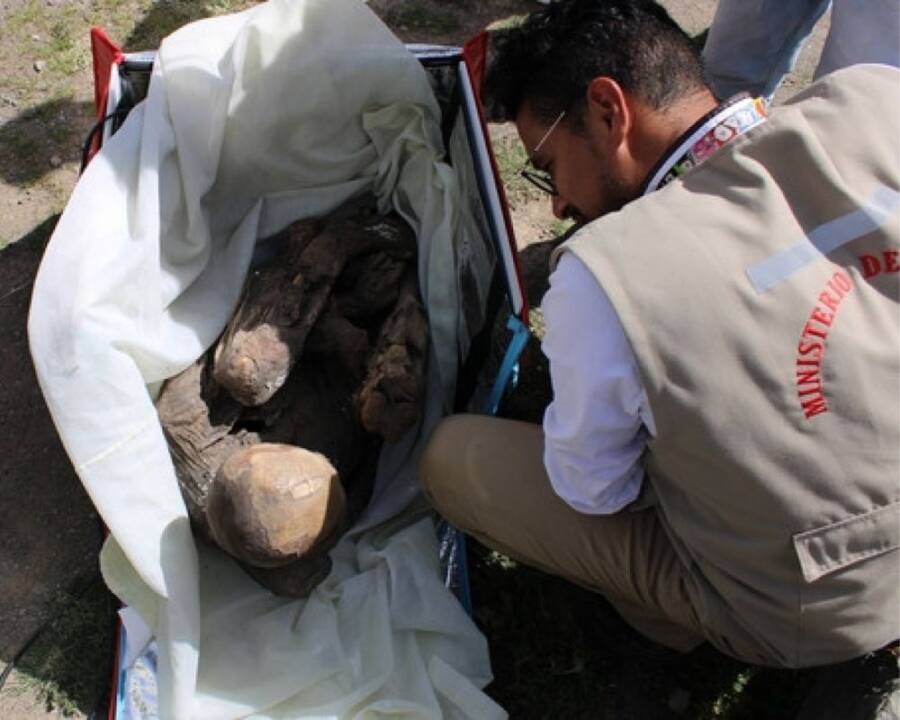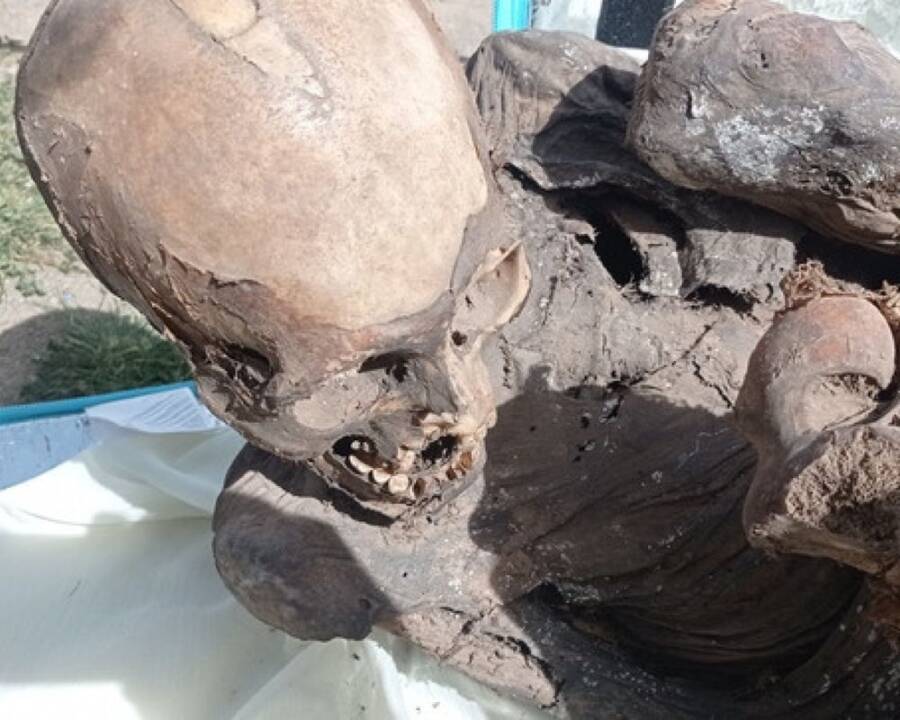Julio Cesar Bermejo referred to the mummy as his "spiritual girlfriend" and said it had been in his family for at least 30 years.

Peruvian Ministry of CulturePolice found the mummy curled up in a fetal position in the man’s bag.
On Feb. 25, 2023, police approached three men in a park in Peru. They had been drinking, and police conducted a routine search of their belongings.
It was during this search that authorities made a startling discovery: one of the men had a centuries-old mummy in his cooler bag, the same bag he had previously used to deliver food to people in the area.
The man, 26-year-old Julio Cesar Bermejo, told police that the mummy was his “spiritual girlfriend” and that he had named her “Juanita,” according to BBC.
When asked how he came into possession of Juanita, Bermejo stated that the mummy had been in the family for 30 years. Per Daily Mail, Bermejo’s father paid around $500 for the mummy decades ago, and Bermejo kept it in a box next to his TV. In fact, the young man had a strong bond with Juanita.
“At home, she’s in my room, she sleeps with me. I take care of her,” Bermejo said in a video clip featured on Al Jazeera.
The day authorities caught Bermejo, he had placed the mummy into his delivery bag to show her off to his friends, BBC reported.
Upon discovering the mummy, authorities arrested Bermejo for possible crimes against Peru’s cultural heritage. The preserved corpse was then handed over to the country’s Ministry of Culture.

Twitter/Feed MileResearchers estimate that the mummy was alive during the age of the Inca Empire more than 600 years ago.
Experts soon determined that “Juanita” is actually “Juan.”
According to the Ministry of Culture, the pre-Hispanic mummy was a “mummified adult male individual, presumably from the eastern area of Puno,” a region in the southern Peruvian Andes. Further testing revealed that the mummy was roughly 45 years old at the time of his death and stood just under five feet tall.
Researchers found that the mummy was between 600 and 800 years old and most likely lived during the age of the Inca Empire, given the details of his mummification, according to Al Jazeera. Authorities found the mummy wrapped in bandages and in a fetal position, both of which were typical of pre-Hispanic burial practices in the area.
Mummification was common in Peru before the region was colonized, and it was even a key component of holidays and celebrations. While many mummies were buried, others were put on display during festivals. It is possible that “Juan” was one of the mummies used for these festivities, which would better explain how Bermejo’s family came to possess him.

Peruvian Ministry of CulturePeru’s Ministry of Culture is currently in possession of the mummy, which is likely 600 to 800 years old.
Regardless of the mummy’s past, Bermejo could face serious charges relating to violations of Peru’s cultural heritage laws.
According to Article 36 of Peru’s Constitution, the mummy is protected by the state:
“The deposits and archeological sites, buildings, monuments, places, bibliographical and archive documents, artistic objects and testimonies with historical value, which have been expressly declared cultural objects, and provisionally those presumed as such, are Cultural Heritage of the Nation, independently of their condition as privately or publicly owned. They are protected by the State.”
The Ministry of Culture said that they took possession of the mummy “with the aim of protecting and preserving [Peruvian] heritage.” If the courts find Bermejo guilty of violating cultural heritage laws, he could face punishments ranging from fines to prison time.
After reading about the Peruvian man who was found with a mummy in a cooler bag, take a look at nine of the most fascinating mummies ever found. Then, learn about Túpac Amaru II, a descendant of Inca royalty who led a bloody revolution against Spanish colonialism in Peru.





